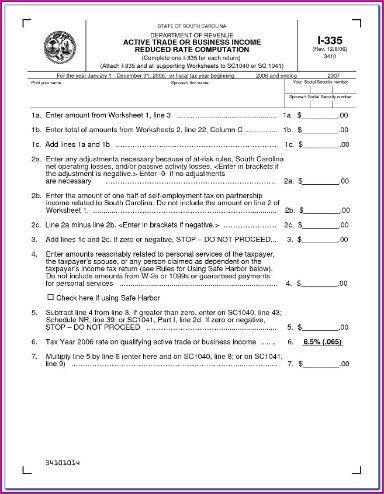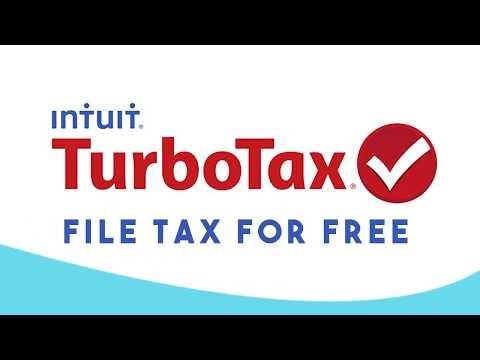Contents:

We follow ethical journalism practices, which includes presenting unbiased information and citing reliable, attributed resources. Much of our research comes from leading organizations in the climate space, such as Project Drawdown and the International Energy Agency . The articles and research support materials available on this site are educational and are not intended to be investment or tax advice. All such information is provided solely for convenience purposes only and all users thereof should be guided accordingly. Go a level deeper with us and investigate the potential impacts of climate change on investments like your retirement account.
The accounting equation ensures that the balance sheet remains balanced. That is, each entry made on the debit side has a corresponding entry on the credit side. Use the “balance sheet equation” to determine owners’ equity if liabilities are $5 million and assets are $10 million. A business’s total liabilities are all of its debts or financial obligations. It’s important to know how to calculate total liabilities so you can determine the net worth of the company. Total liability calculation also allows you to determine how much money a business needs to bring in to be profitable.
If it’s financed through debt, it’ll show as a liability, but if it’s financed through issuing equity shares to investors, it’ll show in shareholders’ equity. Similarly, find total liabilities (current and non-current) and shareholder’s equity for that period and add these two numbers. You need to understand what total liabilities are and how they affect your balance sheet if you’re an accountant or business owner.
For instance, if a business takes a loan from a bank, the borrowed money will be reflected in its balance sheet as both an increase in the company’s assets and an increase in its loan liability. In this form, it is easier to highlight the relationship between shareholder’s equity and debt . As you can see, shareholder’s equity is the remainder after liabilities have been subtracted from assets. This is because creditors – parties that lend money such as banks – have the first claim to a company’s assets. The general rule of this equation is the Total assets of the company will always be equals to the sum of its Total liabilities and Total equity. So this Accounting Equation ensures that the balance sheet remains “balanced” always and any debit entry in the system should have a corresponding credit entry.
Return on Net Assets Net Income / (Fixed Assets + Working Capital) Income compared to net assets. Risk-Adjusted Return on Capital Expected Return / Economic Capital ROI, adjusted for risk. Total assets should be equal to the sum of liabilities and total equity. On the company balance sheet, find all the assets (current and non-current) for the period for which we are determining the equation. In this guide, we’ll guide you through each step required to calculate liabilities.
The remainder is the shareholders’ equity, which would be returned to them. In other words, the total amount of all assets will always equal the sum of liabilities and shareholders’ equity. Understand what the accounting equation is, learn the elements of the basic accounting equation, and see examples.
How to Calculate Carbon Credits? (5 Easy Steps to Follow) – CarbonCredits.com
How to Calculate Carbon Credits? (5 Easy Steps to Follow).
Posted: Fri, 18 Nov 2022 08:00:00 GMT [source]
Expenses are continuing payments for services or things of no financial value. Liabilities are loans used to purchase assets , like equipment, according to The Balance. “Other” liabilities are any unusual debt obligations a company may have. These are typically minor, like sales taxes or intercompany borrowings.
Resources for Your Growing Business
The expanded accounting equation is developed from the standard accounting equation and depicts in greater depth the various components of a company’s stockholders’ equity. The expanded accounting equation makes it easier to see how shareholders’ equity in a company changes between periods. The accounting equation is useful because it provides a concise representation of a company’s multi-item, complex balance sheet. In order for a company to keep accurate track of its financials, every transaction must be recorded in two of its accounts. Here are a few of these equations along with a brief explanation of how they work.
- This way, they can tell whether the company in question is handling its finances responsibly.
- All such information is provided solely for convenience purposes only and all users thereof should be guided accordingly.
- Equity is named Owner’s Equity, Shareholders’ Equity, or Stockholders’ Equity on the balance sheet.
- The accounting equation is useful because it provides a concise representation of a company’s multi-item, complex balance sheet.
Used to ensure company assets equal liabilities and equity, the accounting equation helps keep your books balanced. The monthly trial balance is a list of account names from the chart of accounts accompanied by total account balances or amounts. Before publishing transactions to the general ledger for the accounting cycle, total debits and credits must be equal.
The accounting equation is considered to be the foundation of the double-entry accounting system. Regardless of how the accounting equation is represented, it is important to remember that the equation must always balance. Now say after 2 years, you want to expand the business but do not have funds. So you go to a bank and get a loan of another $10,000 to expand the operations. This will increase your assets and also increase your liabilities. For example, cash, inventory, property, and equipment, etc. all form part of assets.
Examples of Accounting Equation Formula
Using the expanded version of the common accounting equation, economics analysts can more easily understand the breakdown of shareholders’ equity. It can be especially useful to analyze how a firm uses its profits. In general, the major benefit of utilizing the expanded version of the accounting equation is the additional clarity on the equity portion of the balance sheet over time. Accounts ReceivableAccounts receivables is the money owed to a business by clients for which the business has given services or delivered a product but has not yet collected payment. They are categorized as current assets on the balance sheet as the payments expected within a year. Share repurchases are called treasury stock if the shares are not retired.

The higher the total liabilities, the more money the company needs to make to pay off its debts and make a profit. A thorough accounting system and a well-maintained general ledger helps assess your company’s financial health accurately. There are many more formulas that you can use, but these eight covered in this article are undoubtedly key for a profitable business.
Health Spending Accounts: A Flexible and Efficient Way to Manage Healthcare Costs
The balance sheet is a formal view of the accounting equation which is made by companies to monitor their progress. The statement of financial position is also monitored by shareholders to see the profitability of the organization. According to the accounting equation, the total assets of a company are equivalent to the sum of the company’s liabilities and the equity held by its shareholders.
Its mortgage is $2000 a month and it has credit card debt of $5000. It took out a $10,000 business loan a couple of years ago to renovate its space and it still owes $2000 on the balance. Finally, the owner owes the government $1000 in sales and income tax.
The process of accounting allows a firm to keep track of its income and expenditures. When making business decisions, a firm must be able to present management and investors with the necessary financial information. Banks Balance Sheet – ExplainThe bank’s balance sheet is different from the company’s balance sheet.
Remember,your net income is made up of your total revenue minus your expenses. If you have high sales revenue but still have a low profit margin, it might be a high time to take a look at the figures making up your net income. It is imperative to note that in all business aspects, only the components of owner’s equity are changing, while there is no change in the assets and liabilities of any business framework. The expanded accounting equation differs from company to company based on the size and the economic structure of the business.
What is the expanded accounting equation?
And while these equations seem pretty straightforward on paper, they can get a bit more complicated in practice. Total liabilities include all of the costs your business must pay to outside parties. Total equity is the amount of the money you as the owner have invested in the business. Fortunately, you don’t have to be a math whiz to be a successful entrepreneur. Even though running a business requires solving occasional financial equations, they’re not complex — and you’re never more than a click away from a calculator. Here are eight of the most common accounting equations and how to solve them.

The equation is also important as it helps accountants accurately determine the effect of a specific transaction with owners. This method also saves time and amendments can be made with ease. The standard accounting equation is identical to the expanded accounting equation, with the exception that the expanded accounting equation breaks equity down into its component parts.
Return on Capital EBIT(1 – Tax Rate) / Invested Capital Profit compared to capital. Return on Equity Net Income / Average Shareholder Equity Profit compared to equity. Return on Investment, ROI (Gain from Investment – Cost of Investment) / Cost of Investment Measures efficiency of an investment.

This balance sheet equation is used to calculate the relationship between your business assets, liabilities, and equity based on basic and expanded accouting information. The cost of goods sold equation allows you to determine how much you spent on manufacturing the goods you sold. By simply subtracting the costs of goods sold from revenues, you’ll determine your gross profit. The accounting equation ensures for every debit entry made, there is a corresponding credit entry made. Single-entry accounting is similar to checkbook accounting, where you simply record transactions as they occur.
Still, unearned revenueants and investors may investigate these to ensure that a company is financially healthy. Retained earnings represent the sum of all net income since business inception minus all cash dividends paid since inception. Assets are all of the things your company owns, including property, cash, inventory, accounts receivable, and any equipment that will allow you to produce a future benefit.
Expanded Accounting Equation: Definition, Formula, How It Works – Investopedia
Expanded Accounting Equation: Definition, Formula, How It Works.
Posted: Sun, 26 Mar 2017 00:11:34 GMT [source]
Will be listed as shareholder’s equity on your balance sheet. Liabilities are what your business owes, such as accounts payable, short-term debts, and long-term debts. While double-entry accounting is more complicated than single-entry accounting, the end result is more accurate financial statements and books always in balance, both worth a few extra minutes of work. Every transaction has a monetary influence on the accounting equation, yet the equation as a whole is always balanced.
Calculating Flow Thru – What’s the Correct Formula? – Hospitality Net
Calculating Flow Thru – What’s the Correct Formula?.
Posted: Tue, 27 Sep 2022 07:00:00 GMT [source]
Beginning inventory is how much inventory you have on hand at the beginning of the period. Sales refer to the operating revenue you generate from business activities. Sales are the sales prices charged multiplied by the number of units sold.
Whereas a high profit margin generally indicates a healthy company. In the early stages of business, the net income equation may demonstrate a net loss. Becoming profitable or establishing a positive net income should be the goal of every small business. And equity is the value of the portion of your company that belongs to you, the owner.
Equity is any amount of money remaining after liabilities are subtracted from assets. Examples of equity recognized in a company’s financial statements include retained earnings and ordinary share capital. Due to the nature of the accounting formula, other elements can be moved around as needed to solve for unknown variables. For instance, if you did not know the equity of the company but did know its liabilities and assets, you could subtract liabilities from assets in order to determine the equity. Current Assets–Current Liabilities are the working capital formula.

